Heavy Lifting: Raising the Deck Sections
Previous posts in the New Narrows Bridge Series:
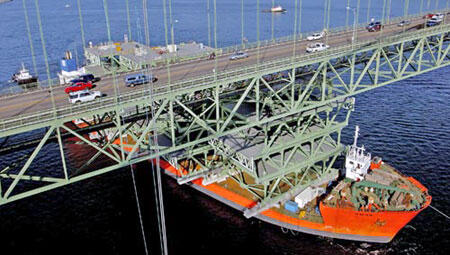
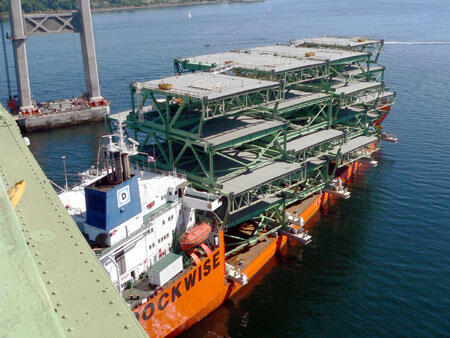
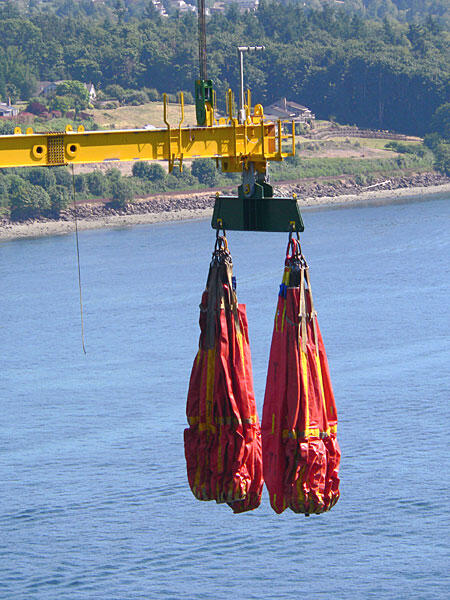
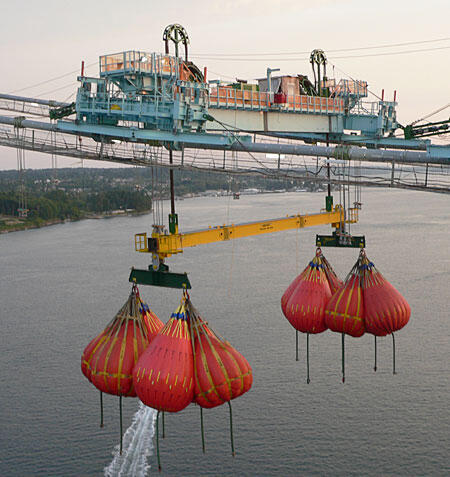
Man, I haven’t seen bags that big since before my facelift…
The gantry cranes can move along the cables — very slowly — but cannot move under the load of a deck section. So the cranes can be used to lift the sections vertically but cannot position them horizontally after they are lifted. The transport ship is far too large and cumbersome to move around under the cables by itself, so the sections must be moved to more mobile barges. Special barges are used which have lateral thrusters to stabilize and fine-tune their position under the cables in the rapid, ever-changing currents of the Narrows. But there’s one more problem: how are you going to get the sections from the transport ship to the barge, since the cranes can’t move the sections horizontally?
The answer is rather ingenious and surprising: move the transport ship laterally.
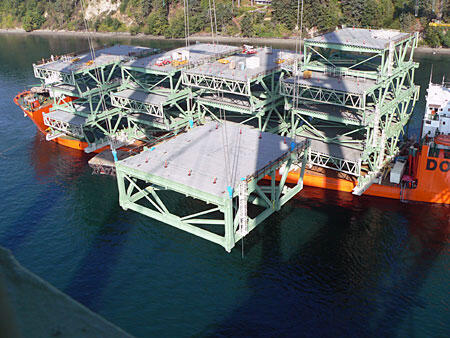
The transport ship is equipped with a dozen large winches along its sides and ends, just above the water line, which are attached to fixed anchors. The cranes position themselves over the transport, lift a section vertically then the winches pull the transport ship out of the way, to the side, allowing tugs to move the barge under the bridge section.
The first sections were then lifted to center span, where their uncompensated weight caused the cables to drop nearly 12 feet resulting in a shape more like a ‘V’ than a gentle parabola between the two towers.
The degree of this dip can be appreciated by following the curve formed by the free suspension cables hanging from the main cables. Prior to lifting the center deck sections, they formed a gentle catenary curve upwards toward mid span; after the deck sections are in place, they gradually slope downwards from the towers to mid-span.
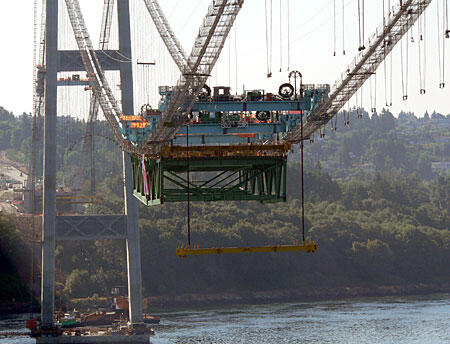
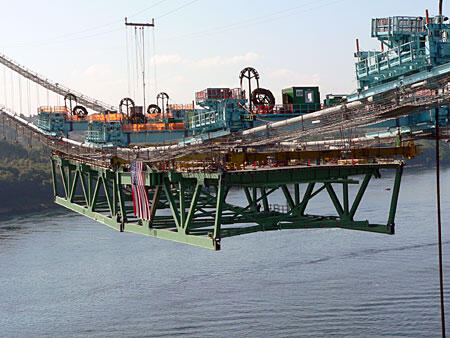
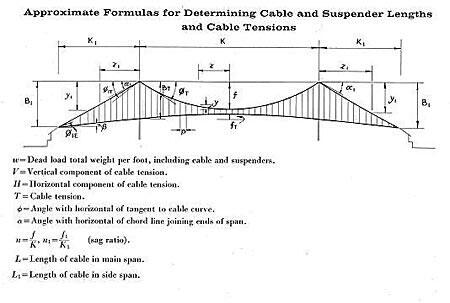
Next: time we’ll take a swing on a flying trapez..





